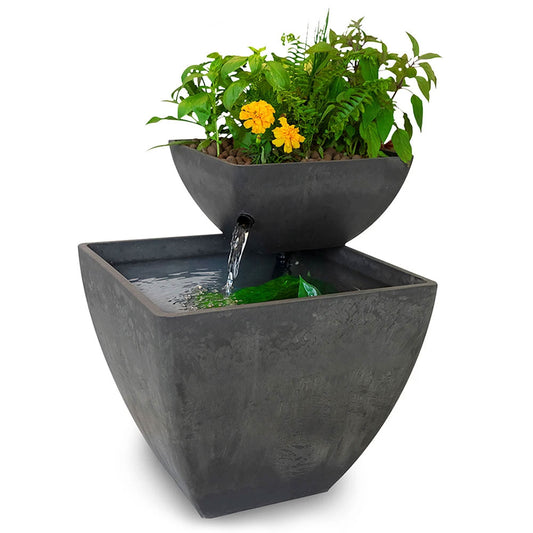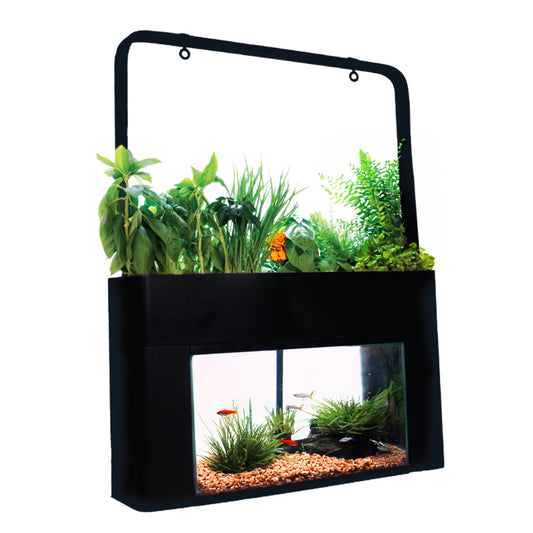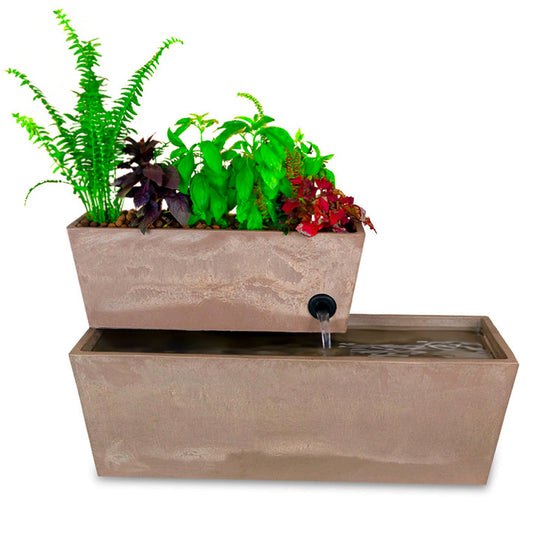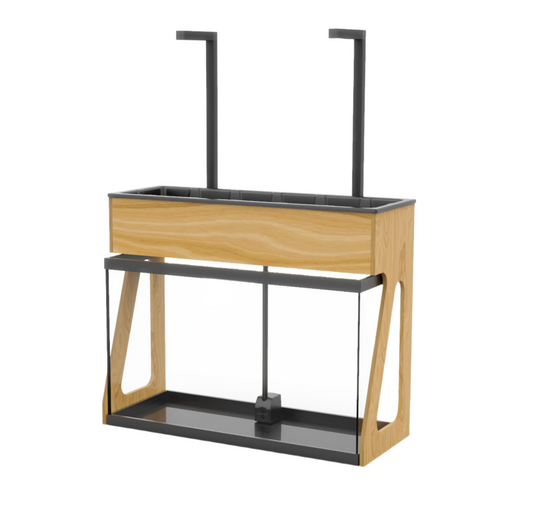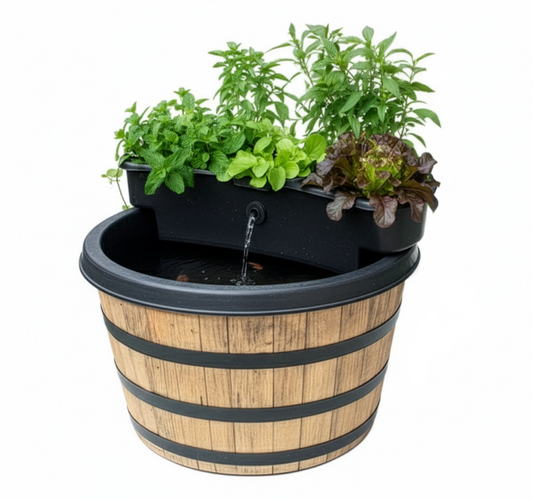Ammonium Trap: It's Not the pH Drop that Gets You...
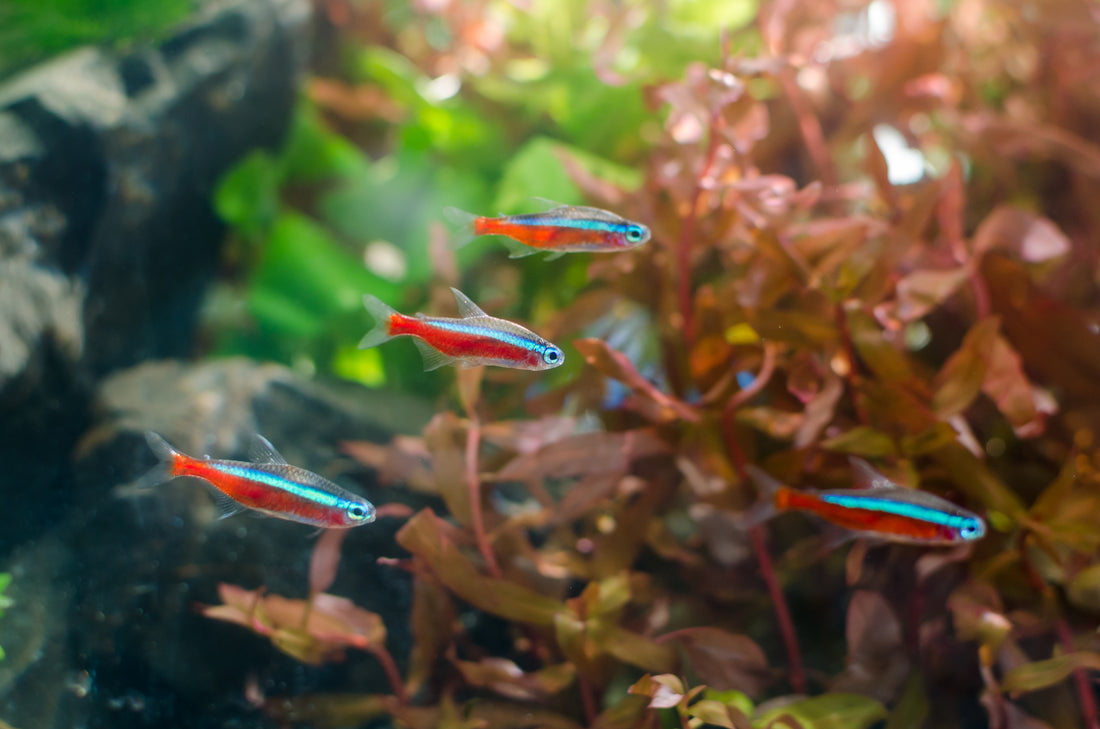
Any aquatic system is a complex biochemical environment. We rely on nature to handle most of the details for us, and typically look to appliances and one-shot chemical solutions for the rest. But a little bit of knowledge can go a long way toward preventing problems and ensuring you’re prepared if something does go wrong. You don’t need to be a mechanic to change a tire, and we don’t believe you should have to be a chemist to troubleshoot your aquaponic garden. Consider this the service manual you never received.
In any new aquatic system, aquaponics or aquarium, the first few weeks of operation are the most difficult. That’s common knowledge; this stage is referred to as cycling, and we’ve got a whole guide dedicated to managing it. But some problems can go beyond cycling. One of the most common hazards in a cycling tank can actually occur at almost any time, in almost any tank… and it’s a killer. One common mistake, in the right conditions, can drop you into an “ammonium trap,” and you may never see it coming until it’s too late.
The biochemical engine of any closed (recirculating) aquatic system is nitrification. Nitrification is a win-win sequence of chemical reactions in which microbes convert ammonia into less reactive - and less poisonous - nitrogen compounds. Ammonia is the primary form of nitrogen waste in aquatic systems; fish excrete it and organic waste decomposition produces it. Without the aid of nitrifying bacteria to break it down, aquariums would need nearly constant fresh water exchange, and aquaponics wouldn’t work at all because while plants need nitrogen, they can’t process ammonia very well.
Nitrification does have a side effect. A couple of free hydrogen ions (H+)1 are produced for each molecule of ammonia processed, and hydrogen is the “H” in pH. The importance of a stable pH in aquatic systems is also common knowledge. The acidity or basicity of water affects everything from fish respiration to the availability of nutrients and minerals for plants. And hydrogen ions drive pH down - make it more acidic. The more nitrification activity you have, the faster your system’s pH will drop. This is why aquariums tend to become more acidic over time, and one reason they require water changes. It’s also one of the few ways aquaponic systems aren’t fully self-sustaining; pH will still need management.
But that’s not the trap. pH management is a normal part of aquaponics. Even though low pH can be harmful, especially for fish, under normal circumstances it won’t change rapidly. But pH affects many other things, including ammonia. The lower the pH, the more ammonia (NH3) is actually present as ammonium (NH4+); it takes on some of that extra hydrogen bouncing around in acidic systems. Ammonium doesn’t react the same way ammonia does; it’s nontoxic, but it also can’t be bound by the enzymes that nitrifying bacteria use to process ammonia. In a low-pH environment, ammonium can build up invisibly, harmless… until it isn’t.
Un-ionized ammonia (NH3) can be dangerous to fish in concentrations as low as .05 mg/L, and is often deadly at 1 mg/L. Total ammonia - including ionized ammonium - may run much higher, up to tens or hundreds of mg/L, without being immediately deadly depending on temperature and pH. If your aquarium is in a steady state, your biofilter will use up the available ammonia as fast as it’s produced, and your water may carry little or no ammonia, even ionized. Any ionized ammonium will convert to ammonia only very slowly, and can be processed as it does. But if you raise the pH of a system with a significant amount of ionized ammonia, a lot of it can convert at once, and this can create a dangerous spike in NH3. If pH has dropped very low, biofilter activity may also have tapered off as ammonia became unavailable, so it won’t be healthy and ready to process out a sudden surge. Even a large (50%+) water change can trigger this ammonia bomb! If you remove half the water in your system, you remove half the ammonia; if this drops your concentration from 20 mg/L to 10 mg/L but raises the pH from 3.5 to 7, you’ll still have a sudden, lethal surge in toxic unionized ammonia.
So what can you do?
Fortunately, this trap is pretty easy to avoid. Regular pH testing will tell you if your pH is drifting, and taking action to correct it slowly, over time, will prevent it from going far out of range. The most common cause of large, rapid drops in pH is the introduction of a large amount of biological material - either overfeeding or the death of a fish. The decomposition of a large quantity of food or a fish carcass can create a sudden spike in ammonia. A strong biofilter may be able to handle this spike, but in doing so it can lower pH significantly, trapping some of the ammonia as ammonium. Chronic overfeeding will magnify this effect, as will an overstocked tank.
Buffering your water can help prevent these events from becoming runaway acidification. If you use a water source that’s hard or alkaline, regular water changes may do the job. If you’re using soft or filtered water, you may need to add buffers to increase your system’s pH stability. Be careful not to over-buffer, because a consistently high pH can present its own problems for fish and plants. You can learn more about pH management here.
What if you’re already caught? Maybe a fish died unobserved, or a helpful child dumped half a container of food in the tank, or maybe time just got away from you and you didn’t test pH for a couple months. Now you’ve checked, and your water is an acidic mess with a concentration of ammonia you really don’t want to think about. It’s a bad spot to be in. So what can you do?
Don’t worry! Once you know about the trap, you can escape from it. You’ll just have to be careful. For starters, if you can get purified water (reverse osmosis or distilled) that isn’t buffered, a water change can help remove ammonia without raising pH (You can use water from other sources if you adjust the pH down to match your tank first). It’s also a good opportunity to remove any remaining decomposing organic matter, including changing filters and siphoning gravel. Then you can begin the process of very, very slowly increasing pH. Use fresh water or a pH-increasing supplement to raise pH by no more than .1 per day, and be alert for signs of distress in your fish in case your biofilter takes time to catch up. Feed your fish as minimally as you can. As you raise pH, test ammonia, and watch to ensure it drops. When you’ve reached your normal target pH, it’s a good time to perform a water change to remove any remaining excess ammonia and reset your system.
If your fish are obviously in distress from a crashed pH and you’ve got a lot of ammonium lurking, this is one of the few situations where it might be necessary to just move them into new water. If you have the ability to adjust pH, consider taking some fresh, clean water in another aquarium or temporary container, matching it to the temperature and pH of your system, and moving your fish into it. You can then rapidly raise the pH of your main system without endangering the health of your fish, or even change most or all of the water. Always be sure to adjust the pH of water with fish in it very slowly, and match pH if you’re going to move them.
Prevention is the Cure
You can manage this ugly situation as long as you’re careful, but remember, the easiest way out of a trap is never to fall into it. Once you get acquainted with your system, it becomes simple to spot anything out of the ordinary, and if you spot something, you can follow up with the appropriate testing, cleaning, or other intervention. Keep an eye out for uneaten food, dead fish, or other decaying organic matter, and check pH periodically even in a very stable established system. Keep up with regular water changes in aquariums, and don’t forget that even aquaponic systems occasionally need a cleaning and water change. This trap can be a pain, but it’s no match for a little care and attention!

